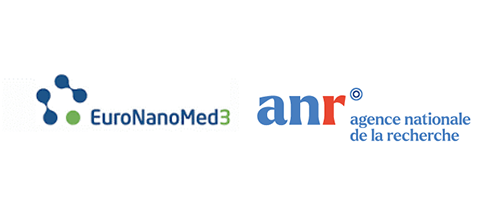Research program : Extracellular vesicles and metabolic diseases
Home > Team 6 > Research program > Axe 2
Therapeutic strategies against cardio-metabolic dysfunctions: extracellular vesicles
The second challenge for our team is to address therapeutic strategies to combat metabolic dysfunctions by using the properties of extracellular vesicles as a new way to deliver innovative therapies to specific target cells. One of the objectives will be the selection of specific extracellular vesicles to assess their therapeutic potential and to provide proof of concept of their properties. New types of extracellular vesicles will be designed to over-express different therapeutic actors (proteins, mRNA or miRNA) from the relevant producer cells. One objective will be to assess the therapeutic potential of these extracellular vesicles in preclinical models.
Small sized vesicles (sEV) as innovative approaches in nanomedicine to correct obesity and its cardio-metabolic and psychotic complications with specific targeting of the hypothalamus: A consortium of 4 European laboratories, coordinated by R Andriantsitohaina and supported by ERANET EURONANOMED, participates in this project. The network aims to develop a “nanobiomedicine” approach to exploit the biology of sEV as an innovative approach for specific targeting of hypothalamic nuclei modulating energy balance (patent EP21382763). We aim to provide DNA in “neuron specific” hypothalamic populations to open a new avenue in the pharmacological treatment of metabolic complications. We have already demonstrated the importance of this strategy by using intravenous injections of sEV loaded with a plasmid with a dominant negative (DN) of AMPKα1 under the SF1 promoter. Administration of SF1-AMPKα1-DN sEV significantly decreases weight in obese mice. This effect was not associated with changes in food intake but involved activation of the sympathetic nervous system and increased brown adipose tissue thermogenesis. Now, we propose to extend the study to other targets. The following objectives will be taken: (i) validation of sEV modified by the SF1 promoter from immature mouse dendritic cells in vitro and in vivo to be delivered specifically in hypothalamic neurons; (ii) proof of concept in vivo of the effects of SF1-induced sEV on energy metabolism and cardiovascular functions in models of obesity induced by high-fat diets or by antipsychotic drugs; (iii) the study of molecular pathways in SF1 neurons inducing the effects of sEV loaded with plasmids of interest; (iv) production of human sEV from freshly derived monocyte dendritic cells under GMP conditions for transfer to the clinic. This program will establish an innovative nanobiomedicine approach based on sEV to combat obesity-related diseases. Controlling the central regulation of obesity by this approach would lead to the definition of new strategies to monitor the efficacy of therapy with minimal side effects. Using these sEV is the only way to target a specific hypothalamic area through intravenous administration, making them affordable for therapeutic use.
Fundings

Small sized vesicles (sEV) as carriers of molecules with pharmacological activity:
Large extracellular vesicles (lEV) as therapeutic tools for cardioprotection and regenerative medicine:
For 15 years, we have been developing a strategy based on the vasculo- and cardioprotective effects of lEV carrying the Sonic Hedgehog morphogen that we produce by bioengineering (patent WO2014108549A1). At the vascular level, these lVEs are able to induce angiogenesis in vitro and in vivo, inhibit endothelial apoptosis by modulating the production of reactive oxygen species and reduce blood pressure in a model of hypertension via the production of nitric oxide (NO) and reduction of oxidative stress.
Additionally, in collaboration with PhyMedExp team 1, we showed that Sonic Hedgehog-carrying lEV reduce infarct size and arrhythmias resulting from the prevention of ventricular repolarization abnormalities in an ischemia-reperfusion model in rats. The mechanisms are due to the reduction of the QT interval of the electrocardiogram. It has been shown to involve the NO/cyclic guanosine monophosphate pathway leading to shortening of ventricular cardiomyocytes and a decrease in action potential duration resulting from activation of a rectifying potassium current which has pharmacological and electrophysiological properties identical to KATP. We have demonstrated the proof of concept of the patent in a porcine model in collaboration with the Veterinary School of Maison d’Alfort (Pr Bijan Ghaleh). Indeed, these lEV are able to inhibit by 39% the infarct size in pigs in a severe ischemia/reperfusion model
Currently, we are evaluating the ability of these lEV to regenerate cardiomyocytes following myocardial infarction. The expected results could allow us to propose lEV carrying Sonic Hedgehog obtained by bioengineering as a new therapeutic approach, independent of gene therapy, capable of correcting endothelial and cardiac dysfunctions during cardiovascular pathologies.
Fundings

